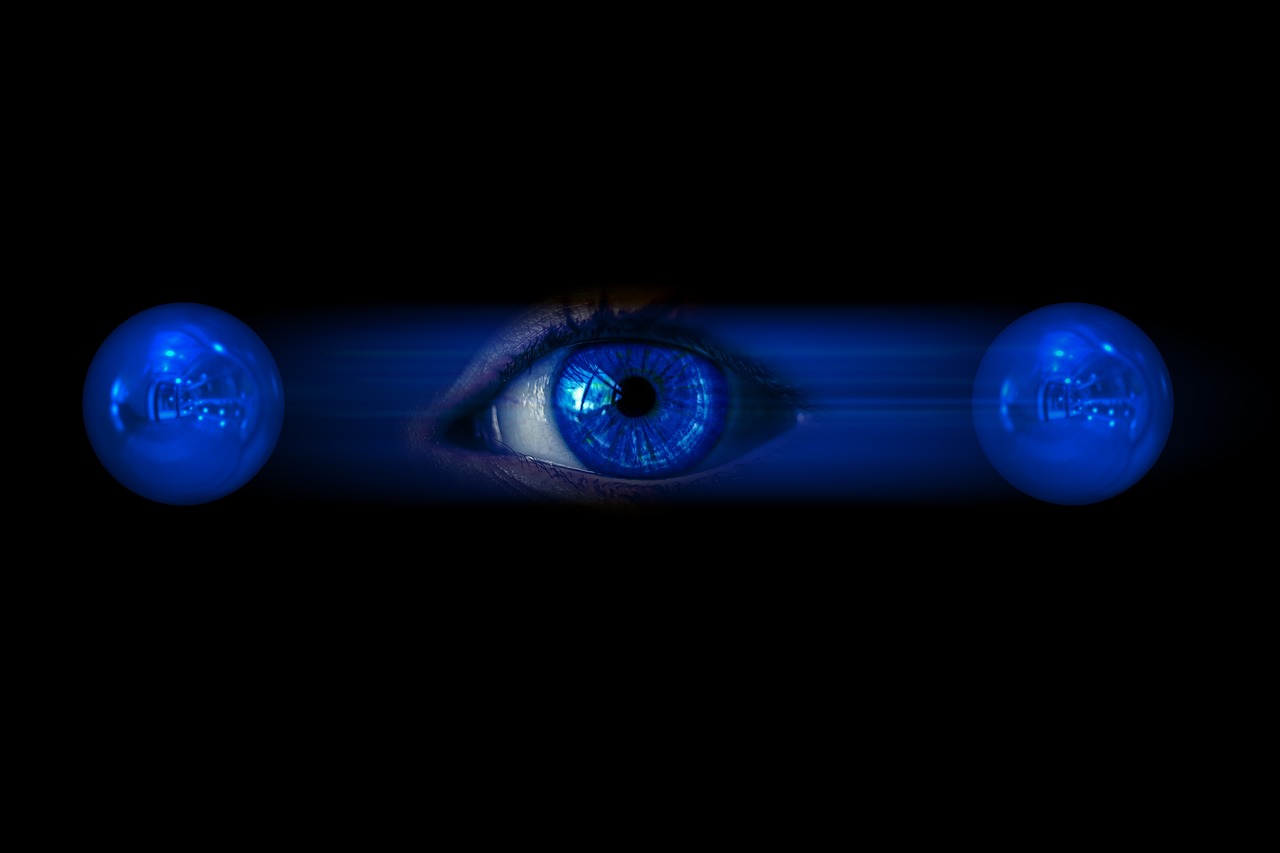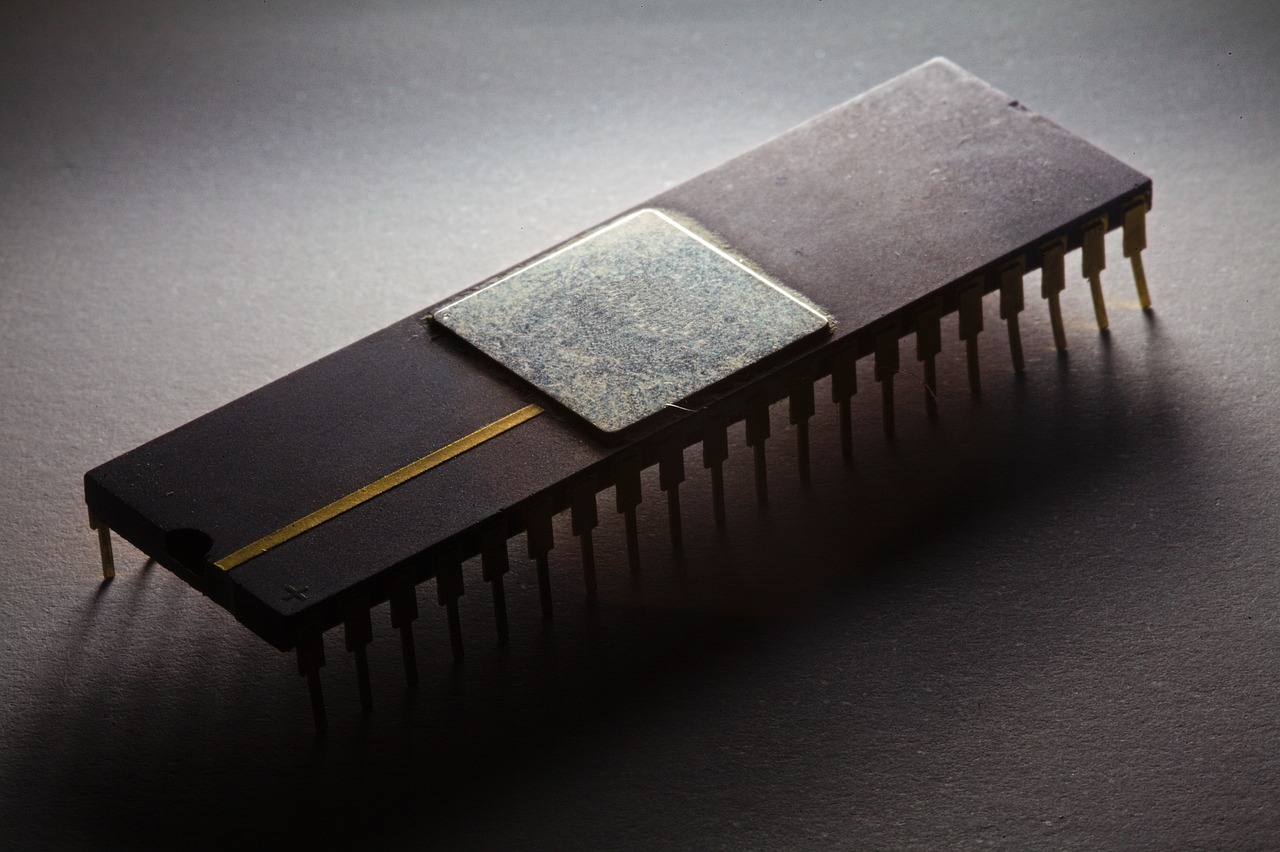The Dance of Duality - Relativity and Quantum Theory
The universe is a grand stage, and on this stage, two remarkable theories perform a captivating dance: relativity and quantum theory. These theories, while seemingly distinct, are intertwined in a complex relationship that shapes our understanding of everything around us. Imagine standing at the edge of a vast ocean, where the waves represent the ebb and flow of time and space, while the depths below hint at the mysterious particles that make up our reality. This article explores the intricate relationship between these two fundamental frameworks of physics, highlighting their unique principles, interconnections, and the profound implications they hold for our comprehension of the universe.
Relativity, first proposed by Albert Einstein, revolutionized our perception of space and time. Before Einstein, the world operated under the classical physics of Newton, where time was absolute and space was merely a backdrop for events. However, Einstein flipped this notion on its head. He introduced two key principles: special relativity and general relativity.
Special relativity, formulated in 1905, tells us that the laws of physics are the same for all non-accelerating observers, and it establishes that the speed of light is constant, regardless of the motion of the observer. This leads to mind-bending consequences, such as time dilation, where time slows down for objects moving at high speeds relative to a stationary observer. Imagine a twin who travels in a spaceship at near-light speed; upon returning, they would find their sibling has aged significantly more than they have!
General relativity, introduced in 1915, extends this understanding to include gravity. Instead of viewing gravity as a force, Einstein proposed that massive objects like planets and stars warp the fabric of space-time itself. This means that objects move along the curves created by this warping, leading to the phenomenon we perceive as gravity. The implications of general relativity are profound, influencing everything from the trajectory of planets to the bending of light around massive objects, a phenomenon known as gravitational lensing.
While relativity reshapes our understanding of the cosmos on a grand scale, quantum theory dives into the microscopic realm, challenging classical physics with its bizarre and counterintuitive principles. At its core, quantum mechanics introduces concepts like superposition and entanglement, which defy our everyday experiences and intuitions.
The principle of superposition suggests that particles can exist in multiple states at once until they are observed. Imagine flipping a coin; while it's spinning in the air, it can be considered both heads and tails simultaneously! This principle is crucial in various quantum phenomena, including quantum computing, where qubits can represent multiple states at once, leading to unparalleled processing power.
Superposition is not just a theoretical concept; it has real-world applications that are reshaping technology. Quantum computers, for instance, leverage this principle to perform calculations at speeds unimaginable with classical computers. In a world driven by data, the ability to process vast amounts of information simultaneously could revolutionize industries, from cryptography to drug discovery.
Another fascinating aspect of quantum theory is entanglement. This phenomenon describes a unique connection between particles, where the state of one particle instantaneously affects the state of another, regardless of the distance separating them. It’s as if they share a secret language that transcends the limitations of space. This has profound implications for information transfer and has sparked interest in developing quantum communication technologies that could lead to ultra-secure data transmission.
The practical applications of quantum theory are astounding. From the invention of lasers to the development of semiconductors that power our electronic devices, quantum mechanics has laid the groundwork for many technologies we take for granted today. These advancements not only enhance our daily lives but also push the boundaries of what is possible in scientific research and technology.
The relationship between relativity and quantum theory presents intriguing challenges. While relativity elegantly explains the behavior of large-scale structures in the universe, quantum mechanics governs the behavior of the smallest particles. Yet, these two frameworks often seem at odds with each other, leading to an ongoing quest in physics to find a unified theory that reconciles them.
Scientists around the globe are striving to develop a unified theory that can bridge the gap between relativity and quantum mechanics. This endeavor has led to several promising approaches, including string theory and loop quantum gravity. These theories aim to create a coherent framework that encompasses both the vastness of the cosmos and the intricacies of the quantum realm, potentially reshaping our understanding of the universe.
Unifying relativity and quantum theory is fraught with challenges. Conceptual and mathematical hurdles abound, making it a daunting task for researchers. The very nature of these theories poses difficulties; for instance, while relativity operates on a smooth continuum of space-time, quantum mechanics introduces a level of uncertainty that complicates the picture. As scientists delve deeper, they must confront these obstacles and find innovative solutions to bridge the divide.
The future of physics lies in the exploration of duality and the potential unification of these fundamental theories. As researchers continue to push the boundaries of knowledge, we can anticipate exciting developments that may redefine our understanding of reality. The quest for a unified theory not only seeks answers but also inspires a sense of wonder about the universe and our place within it.
- What is the main difference between relativity and quantum theory?
Relativity primarily deals with the physics of large-scale structures and the influence of gravity, while quantum theory focuses on the behavior of particles at the microscopic level.
- Can relativity and quantum theory coexist?
Yes, they can coexist, but they operate under different principles and frameworks. Scientists are actively working to find a unified theory that reconciles the two.
- What are some practical applications of quantum theory?
Quantum theory has led to advancements in technologies such as lasers, semiconductors, and quantum computing, which have significant implications for various industries.

Understanding Relativity
Relativity, a groundbreaking theory proposed by Albert Einstein in the early 20th century, fundamentally altered our understanding of the universe. Before Einstein, the prevailing notions of space and time were largely based on the classical mechanics of Isaac Newton, which viewed these concepts as absolute and unchanging. However, Einstein introduced a revolutionary perspective that revealed the intricate dance between space and time, forever changing the landscape of physics.
The theory of relativity is primarily divided into two parts: special relativity and general relativity. Special relativity, published in 1905, introduced the idea that the laws of physics are the same for all observers, regardless of their relative motion. One of its most famous implications is the equation Emc², which illustrates the equivalence of mass and energy. This principle suggests that a small amount of mass can be converted into a vast amount of energy, a concept that underpins many modern technologies, including nuclear power.
On the other hand, general relativity, released in 1915, expanded these ideas to include gravity. Einstein proposed that gravity is not merely a force acting at a distance, as Newton suggested, but rather a curvature of spacetime caused by mass. Imagine placing a heavy ball on a trampoline; the ball creates a dip in the fabric, and smaller objects placed nearby will roll toward it. This analogy highlights how massive objects like planets and stars warp the fabric of spacetime, influencing the motion of other objects. The implications of general relativity have been profound, leading to predictions of phenomena such as black holes and the bending of light around massive objects, a concept confirmed during a solar eclipse in 1919.
To better understand the differences between special and general relativity, consider the following table:
| Aspect | Special Relativity | General Relativity |
|---|---|---|
| Focus | Inertial frames of reference | Non-inertial frames and gravity |
| Key Concept | Time dilation and length contraction | Curvature of spacetime |
| Applications | GPS technology, particle physics | Black holes, cosmology |
Understanding relativity is not just an academic exercise; it has tangible effects on our daily lives. For instance, the Global Positioning System (GPS) relies on both special and general relativity to provide accurate location data. The satellites orbiting Earth experience time slightly differently due to their speeds and the gravitational field they are in, which means that without accounting for these relativistic effects, GPS readings would quickly become inaccurate.
As we delve deeper into the realms of physics, the principles of relativity challenge us to rethink our assumptions about the universe. They remind us that space and time are not fixed entities, but rather dynamic constructs influenced by the presence of mass and energy. This perspective is crucial as we explore the intricate relationship between relativity and other theories, particularly quantum mechanics, which will be discussed in the following sections.

Exploring Quantum Theory
Quantum theory is often viewed as the revolutionary framework that challenges our classical understanding of the universe. Imagine a world where particles don’t just exist in one state but can be in multiple states at once! This mind-bending idea is known as superposition, and it forms the backbone of quantum mechanics. Unlike the predictable paths of planets orbiting a star, quantum particles behave more like waves that can spread out and interact in ways that defy our everyday experiences.
At its core, quantum theory introduces a set of principles that can make even the most seasoned physicists scratch their heads in disbelief. One of these principles is quantum entanglement, a phenomenon where two particles become intertwined, such that the state of one particle instantly influences the state of another, no matter how far apart they are. This is not just a theoretical curiosity; it has profound implications for our understanding of information transfer and the very fabric of reality itself. To put it simply, if you were to change the state of one entangled particle, the other would react as if it had a secret connection, regardless of the distance separating them.
Quantum theory also challenges the classical notion of determinism. In classical physics, if you know the initial conditions of a system, you can predict its future states with certainty. However, in the quantum realm, uncertainty reigns supreme. The famous Heisenberg Uncertainty Principle states that you cannot simultaneously know both the position and momentum of a particle with absolute precision. This principle introduces a level of unpredictability that can be both thrilling and perplexing.
As we delve deeper into the world of quantum mechanics, it becomes essential to recognize its applications. Quantum theory has paved the way for groundbreaking technologies that have transformed our daily lives. Here are a few remarkable applications:
- Lasers: These devices rely on the principles of quantum mechanics to produce coherent light, which has applications ranging from medicine to telecommunications.
- Semiconductors: The technology behind modern electronics, including computers and smartphones, is deeply rooted in quantum principles.
- Quantum Computing: This emerging field aims to leverage the power of quantum superposition and entanglement to perform calculations at speeds unimaginable with classical computers.
In summary, quantum theory not only reshapes our understanding of the microscopic world but also lays the groundwork for technological advancements that continue to revolutionize our society. As we explore these concepts further, we begin to appreciate the profound implications they hold for fields as diverse as information technology, medicine, and even our understanding of the universe itself.
Q1: What is quantum theory?
Quantum theory is a fundamental theory in physics that describes the physical properties of nature at the scale of atoms and subatomic particles. It challenges classical physics and introduces concepts such as superposition and entanglement.
Q2: What is superposition?
Superposition is a principle in quantum mechanics that allows particles to exist in multiple states or positions at the same time until they are observed or measured.
Q3: What is quantum entanglement?
Quantum entanglement is a phenomenon where two or more particles become linked, such that the state of one particle instantaneously influences the state of the other(s), regardless of the distance between them.
Q4: How does quantum theory apply to technology?
Quantum theory has led to the development of various technologies, including lasers, semiconductors, and quantum computers, which have significant implications for electronics, telecommunications, and computational power.

The Principle of Superposition
The principle of superposition is a fascinating concept that sits at the very heart of quantum mechanics. Imagine a world where particles can exist in multiple states at once, like a musician playing several notes simultaneously, creating a rich tapestry of sound. This principle allows quantum particles, such as electrons, to be in a state of superposition, meaning they can occupy different energy levels or positions at the same time until they are observed. This concept is not just theoretical; it has profound implications for how we understand the behavior of matter and energy on a microscopic scale.
To grasp the significance of superposition, consider the famous thought experiment known as Schrödinger's cat. In this scenario, a cat is placed in a sealed box with a radioactive atom. Until someone opens the box to observe the situation, the cat is considered to be both alive and dead simultaneously, embodying the essence of superposition. It’s a mind-bending idea that challenges our classical intuitions about reality!
Superposition is not merely a quirky aspect of quantum theory; it has practical applications that are shaping the future of technology. For instance, in quantum computing, bits can exist in a state of superposition, allowing them to perform multiple calculations at once. This capability could lead to computers that are exponentially faster than today’s machines. Here’s a quick look at some applications of superposition:
- Quantum Computing: Utilizing superposition to process information more efficiently.
- Quantum Cryptography: Enhancing security through the principles of superposition and entanglement.
- Quantum Teleportation: Transferring information instantaneously using superposition states.
Moreover, superposition plays a crucial role in various quantum phenomena, such as interference patterns observed in the famous double-slit experiment. When particles like electrons are fired at a barrier with two slits, they create an interference pattern on a screen behind the barrier, suggesting that each electron passes through both slits simultaneously, a clear demonstration of superposition at work.
In summary, the principle of superposition is not just a theoretical curiosity; it is a fundamental aspect of how the quantum world operates. It challenges our everyday understanding of reality, opening doors to new technologies and reshaping our comprehension of the universe. As scientists continue to explore the implications of superposition, we can only imagine the exciting discoveries that lie ahead.
- What is superposition in quantum mechanics? Superposition refers to the ability of a quantum system to exist in multiple states at the same time until it is measured or observed.
- How does superposition relate to quantum computing? In quantum computing, superposition allows qubits to perform multiple calculations simultaneously, vastly increasing computational power.
- Can superposition be observed in everyday life? While superposition is a quantum phenomenon, its effects can be inferred in technologies like lasers and MRI machines.

Quantum Entanglement
Imagine you have a pair of magical dice. No matter how far apart you roll them, if one shows a six, the other will instantly show a six too. This is the essence of , a phenomenon that baffles and fascinates physicists. When two particles become entangled, their states are linked in such a way that the measurement of one particle's state will instantly determine the state of the other, regardless of the distance separating them. It's as if they share a secret connection that defies the very fabric of spacetime.
Entanglement challenges our classical intuitions about the universe. In the classical world, we are accustomed to the idea that information can only travel in a causal manner, that is, from one point in space to another. However, entangled particles seem to communicate instantaneously, creating a scenario where information appears to be transmitted faster than light. This has led to heated debates about the nature of reality itself and whether our understanding of space and time needs a complete overhaul.
The implications of quantum entanglement extend far beyond theoretical musings. For example, this phenomenon is at the heart of quantum computing, where entangled qubits can perform complex calculations at speeds unimaginable with classical computers. Additionally, entanglement plays a crucial role in quantum cryptography, offering potential solutions to create unbreakable encryption methods. Imagine a world where your online communications are completely secure, thanks to the principles of quantum physics!
To further illustrate the significance of quantum entanglement, consider the following table that summarizes its key features:
| Feature | Description |
|---|---|
| Instantaneous Connection | Measurement of one particle influences the state of another, regardless of distance. |
| Non-locality | Challenges classical notions of locality; particles are connected in a way that transcends space. |
| Applications | Quantum computing, quantum cryptography, and teleportation experiments. |
In conclusion, quantum entanglement serves as a gateway to understanding the deeper mysteries of the universe. It compels us to rethink our assumptions about reality and opens up exciting possibilities for future technologies. As we continue to explore this strange and wonderful phenomenon, we may find ourselves on the verge of breakthroughs that will redefine our understanding of the cosmos.
- What is quantum entanglement? Quantum entanglement is a phenomenon where two or more particles become interconnected in such a way that the state of one particle instantly influences the state of another, no matter how far apart they are.
- How does entanglement work? When particles are entangled, their quantum states are linked. Measuring one particle's state will immediately determine the state of the other particle, even if they are light-years apart.
- What are the applications of quantum entanglement? Quantum entanglement has practical applications in quantum computing, quantum cryptography, and potentially in quantum teleportation.
- Is entanglement faster than light? Yes, entanglement appears to allow for instantaneous communication between particles, suggesting a connection that transcends the speed of light, although it does not allow for faster-than-light communication of information in a classical sense.

Applications of Quantum Theory
Quantum theory isn't just a bunch of theoretical mumbo jumbo; it's the backbone of some of the most revolutionary technologies we use today. Imagine a world where the principles of the tiny particles that make up everything around us are harnessed to create groundbreaking innovations. That's the magic of quantum mechanics! From the smartphones in our pockets to the lasers that read our barcodes, quantum theory is at play in ways we often take for granted.
One of the most notable applications of quantum theory is in the field of quantum computing. Unlike classical computers that use bits as the smallest unit of data, quantum computers utilize qubits, which can represent and store information in multiple states simultaneously, thanks to the principle of superposition. This capability allows quantum computers to perform complex calculations at speeds unimaginable by traditional computers. For instance, they could solve problems related to cryptography, optimization, and simulation of molecular interactions in a fraction of the time it would take a supercomputer.
Another exciting application is found in quantum cryptography. This technology leverages the principles of quantum mechanics to create secure communication channels. With quantum key distribution (QKD), any attempt to eavesdrop on the communication will disturb the quantum states being transmitted, alerting the sender and receiver to potential security breaches. This could revolutionize the way sensitive information is shared, particularly in sectors like finance and national security.
Lasers, which are ubiquitous in our daily lives, also owe their existence to quantum mechanics. The process of stimulated emission, a concept rooted in quantum theory, is what allows lasers to emit coherent light. From cutting-edge medical equipment to high-speed internet and barcode scanners, lasers are integral to modern technology. The precision and control offered by laser technology have opened doors to advancements in fields such as manufacturing, telecommunications, and even entertainment.
Additionally, quantum theory has paved the way for the development of semiconductors, which are essential components in virtually all electronic devices. The behavior of electrons in semiconductor materials can be understood through quantum mechanics, allowing engineers to design more efficient and powerful electronic circuits. This has led to the miniaturization of devices and the rise of the digital age, impacting everything from computers to smartphones.
| Application | Description |
|---|---|
| Quantum Computing | Utilizes qubits for faster calculations, solving complex problems efficiently. |
| Quantum Cryptography | Ensures secure communication by detecting eavesdropping through quantum state disturbance. |
| Lasers | Emits coherent light through stimulated emission, used in various technologies. |
| Semiconductors | Enables the function of electronic devices by understanding electron behavior. |
In summary, the applications of quantum theory are not just theoretical constructs; they manifest in real-world technologies that enhance our daily lives. As we continue to explore the quantum realm, who knows what other groundbreaking innovations await us on the horizon? The dance of duality between relativity and quantum theory is just beginning, and its implications could reshape our understanding of the universe and our place within it.
- What is quantum computing? Quantum computing is a type of computation that uses quantum bits or qubits, which can exist in multiple states at once, allowing for faster and more efficient problem-solving compared to classical computers.
- How does quantum cryptography work? Quantum cryptography uses the principles of quantum mechanics to create secure communication channels. Any attempt to intercept the communication alters the quantum states being transmitted, alerting the parties involved.
- Why are lasers important? Lasers are important because they provide coherent light that is used in a wide range of applications, including medical devices, telecommunications, and manufacturing.
- What role do semiconductors play in electronics? Semiconductors are materials that have electrical conductivity between that of conductors and insulators. They are crucial for the functioning of electronic devices, allowing for the control of electrical currents.

The Intersection of Relativity and Quantum Theory
When we dive into the realms of relativity and quantum theory, we find ourselves at a fascinating crossroads of modern physics. These two theories, while fundamentally different, both seek to explain the universe's mysteries. It's like trying to fit two pieces of a puzzle together that, at first glance, seem to belong to entirely different pictures. Relativity, with its elegant equations, redefined our understanding of space and time, while quantum theory introduced us to a realm where particles can be in multiple states at once and are interconnected in ways that defy classical intuition.
The challenge lies in their incompatibility. On one hand, relativity governs the grand scale of the cosmos—how planets orbit, how light bends around massive objects, and how time can stretch and compress depending on speed and gravity. On the other hand, quantum mechanics operates at the minuscule scale of atoms and subatomic particles, where probabilities reign supreme and particles can be entangled across vast distances. It's a bit like trying to reconcile the rules of a game of chess with those of a game of poker; both are strategic but require entirely different mindsets.
One of the most intriguing aspects of their intersection is the concept of quantum gravity. Scientists are tirelessly working to develop a theory that unites these two frameworks, often referred to as a theory of everything. This endeavor is not merely academic; it holds the potential to unlock profound insights into the nature of reality itself. Imagine a world where we could seamlessly navigate between the vastness of galaxies and the intricate dance of particles, understanding how they influence one another in ways we have yet to fully grasp.
To illustrate this intersection, consider the following table summarizing some key differences and connections between relativity and quantum theory:
| Aspect | Relativity | Quantum Theory |
|---|---|---|
| Scale | Cosmic (large-scale) | Subatomic (small-scale) |
| Key Principle | Space-time curvature | Wave-particle duality |
| Determinism | Predictable outcomes | Probabilistic outcomes |
| Key Figure | Albert Einstein | Max Planck, Niels Bohr |
As we explore the implications of their intersection, we encounter profound questions about the nature of reality. For example, what happens to the fabric of space-time at the quantum level? How do gravitational effects manifest in quantum systems? These questions not only challenge our current understanding but also inspire a new generation of physicists to think outside the box. It’s a thrilling time to be a part of this scientific journey, where every discovery could potentially reshape our understanding of the universe.
In summary, the intersection of relativity and quantum theory is a vibrant and dynamic field of study. It beckons scientists to unravel the mysteries that lie within, much like an artist trying to capture the essence of a complex landscape on canvas. The quest for a unified theory may be one of the most exciting frontiers in physics, promising to deepen our comprehension of the cosmos and our place within it.
- What is the main difference between relativity and quantum theory? Relativity focuses on the behavior of large-scale objects in space-time, while quantum theory deals with the behavior of particles at the atomic and subatomic levels.
- Why is unifying these theories important? A unified theory could provide a comprehensive understanding of the universe, potentially explaining phenomena that neither theory can currently address alone.
- What are some proposed theories for unification? Some leading candidates include string theory and loop quantum gravity, both of which attempt to reconcile the principles of relativity with quantum mechanics.

The Quest for a Unified Theory
The quest for a unified theory in physics is akin to a grand puzzle where each piece represents a fundamental aspect of our universe. Scientists have long sought a comprehensive framework that seamlessly integrates the principles of relativity and quantum mechanics. Imagine trying to fit together two vastly different jigsaw puzzles, each with its own unique shapes and colors. This challenge is not only a matter of mathematical equations but also a philosophical endeavor that pushes the boundaries of human understanding.
At the heart of this quest lies the desire to answer some of the most profound questions about the nature of reality. How do gravity and quantum forces interact? What is the true fabric of spacetime? To tackle these questions, researchers have proposed several intriguing theories, including string theory and loop quantum gravity. Each of these approaches offers a different perspective, yet they share a common goal: to bridge the gap between the macroscopic world, governed by relativity, and the microscopic realm of quantum phenomena.
String theory, for instance, suggests that the fundamental building blocks of the universe are not point-like particles but rather tiny, vibrating strings. These strings can exist in multiple dimensions, and their vibrational patterns determine the properties of particles. This theory not only provides a potential unification of forces but also introduces the concept of additional dimensions beyond our conventional understanding. Imagine a world where the familiar three dimensions of space and one of time expand into a multi-dimensional tapestry, rich with possibilities.
On the other hand, loop quantum gravity takes a different approach by attempting to quantize spacetime itself. It posits that space is made up of discrete units, much like a fabric woven from tiny loops. This theory challenges our traditional notion of smooth spacetime, suggesting instead that at the smallest scales, the universe is grainy and discrete. This idea can be likened to viewing a high-resolution image up close, where you begin to see the individual pixels that create the entire picture. Both of these theories, while promising, come with their own set of challenges and complexities.
Despite the allure of these theories, unifying relativity and quantum mechanics is fraught with difficulties. One major challenge is the inherent incompatibility of the two frameworks. Relativity operates on a grand scale, describing the cosmos as a smooth, continuous entity, while quantum mechanics delves into the chaotic and probabilistic world of particles. These differing perspectives create conceptual and mathematical hurdles that researchers must navigate. For example, the notion of a singular, unified force is often at odds with the discrete nature of quantum particles.
As scientists delve deeper into this quest, they are also exploring the implications of their findings. The potential unification of these theories could not only reshape our understanding of the universe but also lead to groundbreaking technologies. Just as the development of quantum mechanics in the early 20th century paved the way for innovations like lasers and semiconductors, a unified theory could unlock new realms of scientific exploration and technological advancement.
In conclusion, the quest for a unified theory is a thrilling journey filled with mystery and discovery. As researchers continue to explore the intricate dance between relativity and quantum mechanics, they inch closer to unraveling the secrets of the universe. Who knows what revelations lie ahead? The future of physics is undoubtedly bright, and the pursuit of knowledge will continue to inspire generations to come.
- What is a unified theory? A unified theory aims to combine the fundamental forces of nature into a single framework, reconciling different physical theories.
- Why is unifying relativity and quantum mechanics challenging? The two theories operate under different principles and scales, making it difficult to find a common ground.
- What are string theory and loop quantum gravity? String theory proposes that fundamental particles are one-dimensional strings, while loop quantum gravity quantizes spacetime itself.
- What could a unified theory mean for technology? It could lead to new advancements and technologies, similar to how quantum mechanics has shaped modern technology.

Challenges in Unification
The quest to unify relativity and quantum theory is akin to trying to fit together two pieces of a puzzle that seem to belong to different worlds. Each theory has its own set of rules, principles, and implications that, at first glance, appear to be irreconcilable. One of the primary challenges lies in the very nature of these theories. Relativity, introduced by Einstein, operates on a macroscopic scale, dealing with the fabric of space and time itself, while quantum theory dives into the microscopic realm, where particles behave in ways that defy classical logic.
To further complicate matters, the mathematical frameworks of these theories are fundamentally different. Relativity is grounded in smooth, continuous spacetime, while quantum mechanics relies on discrete, probabilistic outcomes. This discrepancy creates a significant barrier to finding a common ground. Imagine trying to explain the concept of a smooth ocean wave to someone who only understands the idea of individual raindrops; it’s a challenge that scientists have been grappling with for decades.
Moreover, the implications of merging these two theories are profound. If we were to successfully unify them, it could lead to groundbreaking advancements in our understanding of the universe, including insights into the big bang, black holes, and the very nature of reality itself. However, the challenges to achieving this include:
- Conceptual Differences: The philosophical implications of merging these theories are vast. For instance, how do we reconcile the deterministic nature of relativity with the inherent randomness of quantum mechanics?
- Mathematical Hurdles: Developing a mathematical framework that accurately describes both the large-scale structure of the universe and the behavior of subatomic particles is a daunting task.
- Experimental Limitations: Currently, we lack the experimental tools to probe the conditions where both theories would operate simultaneously, such as near black holes or during the early moments of the universe.
These challenges have led to various approaches to unification, including string theory and loop quantum gravity. Each of these theories offers a unique perspective, yet none have achieved the consensus needed to be widely accepted. For instance, string theory proposes that the fundamental building blocks of the universe are not particles but tiny vibrating strings, while loop quantum gravity attempts to quantize spacetime itself. Both theories are fascinating, but they come with their own sets of complexities and unanswered questions.
In summary, the challenges in unifying relativity and quantum theory are as intricate as the theories themselves. As researchers continue to explore these complexities, the hope remains that one day we might discover a coherent framework that not only reconciles these two giants of physics but also unveils the deeper workings of our universe.
- What is the main difference between relativity and quantum theory?
Relativity focuses on the large-scale structure of space and time, while quantum theory deals with the behavior of particles at the microscopic level. - Why is unifying these theories important?
A unified theory could provide insights into fundamental questions about the universe, including the nature of black holes and the origins of the cosmos. - What are some approaches to unify relativity and quantum mechanics?
Some approaches include string theory and loop quantum gravity, each offering different perspectives on how to reconcile the two theories.

Future Directions in Physics
The future of physics is a thrilling frontier, teeming with possibilities and ripe for exploration. As we stand at the crossroads of relativity and quantum theory, the quest for deeper understanding beckons us to venture into uncharted territories. Imagine physics as an expansive ocean, where each wave represents a new discovery, and the horizon is ever-changing with the promise of what lies beyond. With every breakthrough, we inch closer to unraveling the mysteries that govern our universe.
One of the most exciting prospects in modern physics is the ongoing investigation into the concept of quantum gravity. This area aims to bridge the gap between the macroscopic world of relativity and the microscopic realm of quantum mechanics. Scientists are actively pursuing theories that could potentially unify these two pillars of physics, such as string theory and loop quantum gravity. These theories attempt to describe the fundamental nature of particles and forces in a cohesive manner, offering a tantalizing glimpse into the fabric of reality itself.
Furthermore, advancements in technology play a crucial role in shaping the future of physics. For instance, the development of quantum computers could revolutionize our computational capabilities, allowing us to simulate complex systems that were previously unimaginable. The implications of such technology extend beyond mere calculations; they could lead to breakthroughs in fields ranging from cryptography to drug discovery. As we harness the power of quantum mechanics, we may uncover new laws of nature that challenge our existing paradigms.
Another promising direction is the exploration of dark matter and dark energy. These mysterious components make up a significant portion of our universe, yet remain largely elusive. Research initiatives, such as the Large Hadron Collider and various astrophysical surveys, are dedicated to understanding their properties and implications. By unlocking the secrets of dark matter and energy, we could reshape our comprehension of cosmic evolution and the ultimate fate of the universe.
Moreover, the concept of multiverses—the idea that our universe is just one of many—has gained traction in theoretical physics. This notion challenges the traditional view of a singular universe and opens the door to a plethora of realities, each governed by different laws of physics. While this may sound like science fiction, it encourages physicists to think outside the box and consider the implications of an interconnected cosmos.
In summary, the future directions in physics are not merely academic pursuits; they represent humanity's enduring quest for knowledge and understanding. As we delve deeper into the realms of quantum mechanics and relativity, we may find ourselves on the brink of revolutionary discoveries that redefine our place in the universe. The journey ahead is filled with challenges and uncertainties, but it is precisely this unpredictability that fuels our curiosity and drives us forward.
- What is quantum gravity?
Quantum gravity is a theoretical framework that seeks to describe the gravitational force within the context of quantum mechanics, aiming to unify general relativity with quantum theory. - How do quantum computers work?
Quantum computers leverage the principles of quantum superposition and entanglement to perform calculations at speeds unattainable by classical computers. - What are dark matter and dark energy?
Dark matter is an unseen form of matter that does not emit light, while dark energy is a mysterious force driving the accelerated expansion of the universe. - What is the multiverse theory?
The multiverse theory posits that there are multiple, potentially infinite, universes that exist parallel to our own, each with its own distinct laws of physics.
Frequently Asked Questions
- What is the main difference between relativity and quantum theory?
The main difference lies in their focus: relativity deals with the macroscopic scale of gravity and the structure of space-time, while quantum theory explores the microscopic world of particles and their behaviors. Think of relativity as the rules of a grand game played on a massive field, while quantum theory is like the intricate moves of individual players on that field.
- How does the principle of superposition work?
The principle of superposition states that a quantum system can exist in multiple states at once until it is observed. Imagine flipping a coin; until you look at it, it can be both heads and tails simultaneously. This principle is fundamental to many quantum phenomena, including quantum computing, where bits can be in multiple states, allowing for more complex calculations.
- What is quantum entanglement?
Quantum entanglement is a phenomenon where two particles become linked, such that the state of one instantly influences the state of the other, no matter how far apart they are. It's as if you have two magic dice; if you roll one and it shows a six, the other one will also show a six, even if it’s on the other side of the universe!
- Why is unifying relativity and quantum theory important?
Unifying these two theories is crucial because they currently describe different aspects of the universe. A unified theory could provide a more complete understanding of how the universe works, potentially leading to new technologies and insights about the nature of reality itself. It’s like trying to connect two pieces of a puzzle that, when combined, reveal a breathtaking picture.
- What are some challenges in developing a unified theory?
Challenges in unifying relativity and quantum theory include conceptual differences, such as how gravity is treated in relativity versus quantum mechanics. Mathematically, the equations of both theories often clash, making it difficult to find a common ground. It’s like trying to fit two very different jigsaw pieces together, each with its own unique shape.
- What future directions might physics take in this area?
The future of physics may explore various approaches, such as string theory and loop quantum gravity, which aim to bridge the gap between relativity and quantum mechanics. Researchers are also looking into experimental methods to test these theories, which could lead to groundbreaking discoveries. Imagine being on the brink of discovering an entirely new dimension of understanding!



















